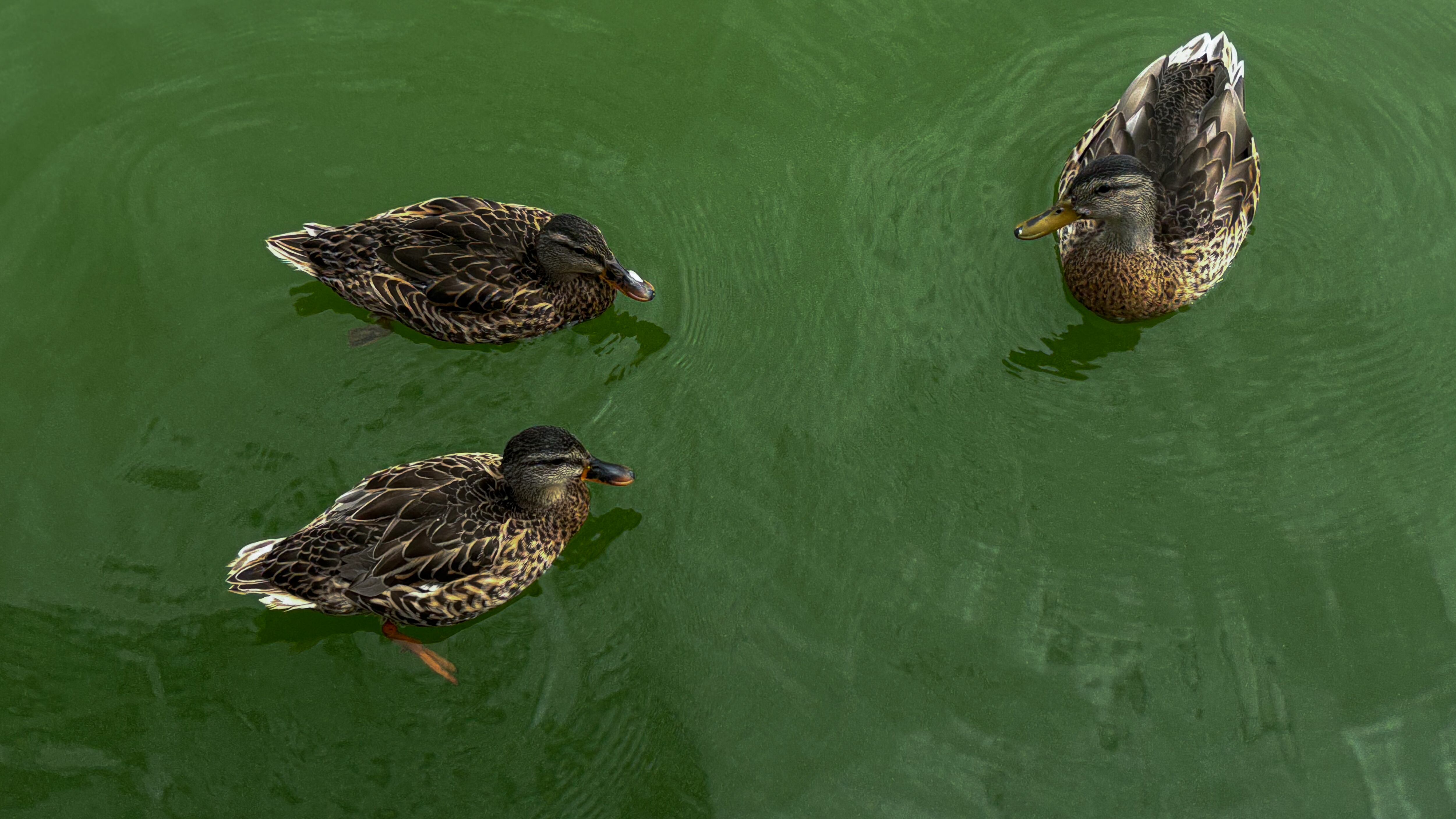The Oregon Health Authority has lifted a health advisory for a toxic algae bloom in the Willamette River, the agency announced today. The advisory, spanning from Ross Island Lagoon to Kelley Point Park, was in place for nearly a week.
Originally, the advisory was made based on visible scum and cell density counts, not toxicity levels. The criteria for these types of advisories indicate they can only be lifted once test results, which typically take up to a week, indicate cyanotoxin levels below a certain threshold.
Those results are now available. Tests conducted by the Department of Environmental Quality show cyanotoxin levels below OHA’s recreational use values for microcystin, the most common cyanotoxin and the only one detected so far in the Willamette River.
The most recent testing revealed microcystin levels of 0.24 micrograms per liter in the Ross Island Lagoon, according to OHA spokeswoman Erica Heartquist. The threshold, per OHA’s guidelines, is 8.0 micrograms per liter; a level equal or greater than that would have caused the advisory to stay in place.
These thresholds are used to determine the safety of recreational water use—such as swimming and boating—for humans. Dog-specific recreational use values have a much lower threshold of 0.2 micrograms per liter for microcystin, and are not used as the basis of public health advisories in Oregon.
“OHA does not issue advisories solely for pet health, but we do notify water body managers so they can post signage onsite, and post information to the OHA advisories webpage when there is a pet illness or death reasonably connected to cyanotoxin exposure,” Heartquist says.
This summer’s algae bloom in the Ross Island Lagoon renewed questions about whether state officials are sufficiently addressing the stagnant water left behind by a decadeslong mining operation.
Willie Levenson of the Human Access Project, a nonprofit organization dedicated to preserving public river access, says he is happy to see OHA’s responsiveness to lifting the advisory, but that any prevention of cyanotoxin spread that took place can be attributed to cool weather and rain, not state-sanctioned solutions. He also says regular testing is needed in light of week-long turnaround times.
“Just because it’s not toxic on Monday doesn’t mean it’s not toxic on Wednesday,” he says. “We need to process these results faster.”
Utilizing drone footage from the HAP and Eagle Eye Droneography, Levenson pointed out that though the bloom has largely dispersed there is still visible evidence of cyanobacteria remaining in the lagoon. The toxicity levels of the bacteria are not confirmed, but he says he would still advise people to avoid recreating in the area.
DEQ is currently evaluating the effectiveness of the silt curtain put in place by Ross Island Sand and Gravel, according to spokesperson Michael Loch. RISG will continue to collect water samples for testing every two weeks through September 30.
In the meantime, OHA is warning the public to continue to be vigilant when considering recreational use of the Willamette River. Cyanotoxins can still be released and exist in clear water even after a bloom has died, and can crop up at any point if the conditions are favorable.
OHA is also urging the public to become familiar with signs of blooms, such as foamy, thick or blue-green water. If visible, the agency advises, avoid activities that could lead to ingestion of water.
This story has been updated.

